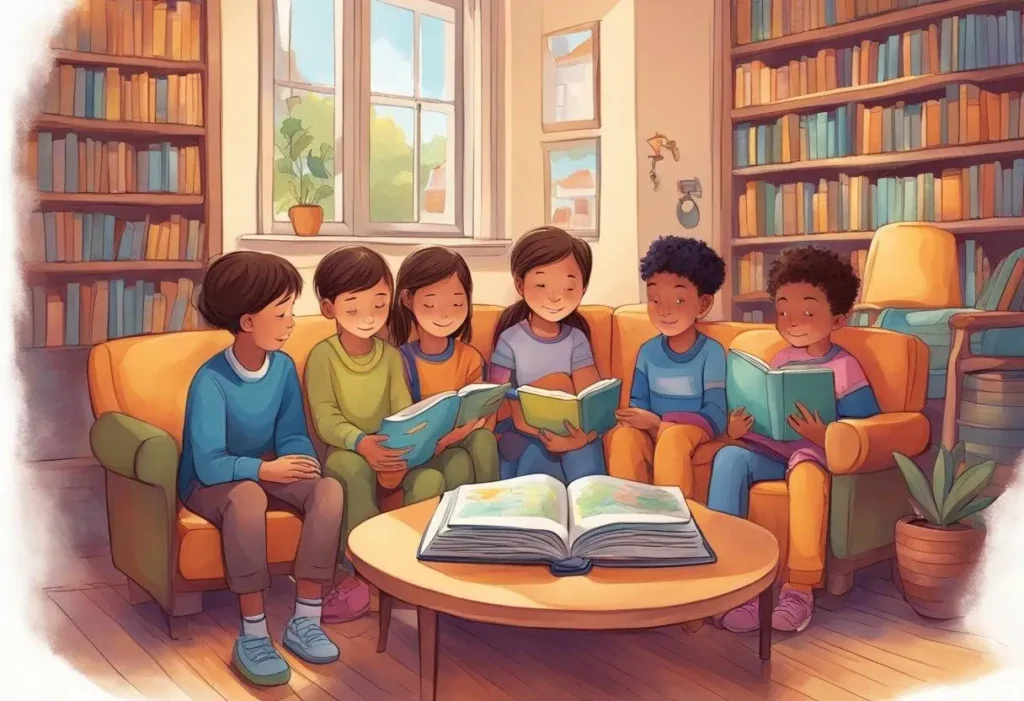Storytelling is a powerful tool that has been used for centuries to convey important messages, teach lessons, and entertain audiences of all ages. For young children, in particular, storytelling can have a profound impact on their development, imagination, and literacy skills. It is through those who learn how to write a children’s book, stories develop that children learn about the world around them, explore their emotions and feelings, and develop a love for language and literature.

Storytelling exposes children to a variety of experiences and perspectives, broadening their understanding of the world by introducing different cultures and traditions. It stimulates their imagination and creativity, fostering cognitive and social development while enhancing self-expression and effective communication.
Storytelling also has a profound effect on literacy skills, expanding vocabulary, comprehension, and critical thinking. It teaches children to navigate narratives, identify themes, and connect concepts, proving to be an indispensable tool for their overall growth and development.
Components of an Engaging Story

When it comes to storytelling for children, there are several components that can make a story engaging and memorable. These components include characters and settings, plot and moral values, and language and vocabulary.
Characters and Settings
Characters and settings are essential components of any engaging story. Children are naturally drawn to stories that feature relatable characters and interesting settings. A well-developed character can help children understand and relate to different perspectives and emotions. Meanwhile, a detailed and imaginative setting can transport children to new worlds and spark their creativity.
Plot and Moral Values
An engaging story also needs a strong plot that captures children’s attention and keeps them interested. A well-crafted plot can help children develop critical thinking skills and problem-solving abilities. Additionally, a story that conveys moral values can help children learn important life lessons and develop empathy for others.
Language and Vocabulary
Finally, language and vocabulary are crucial components of an engaging story. Storytelling can help children develop language skills such as listening, speaking, and comprehension. Additionally, exposure to a wide range of vocabulary can help children build their vocabulary and improve their reading and writing abilities.
Techniques for Effective Storytelling
Effective storytelling is an art that requires creativity and skill. It is a powerful tool that can be used to engage and entertain children while also imparting important life lessons. Here are some techniques for effective storytelling:
Using Props and Visual Aids
Props and visual aids can add an extra layer of interest to a story and help children visualize the story’s characters and setting. For example, a stuffed animal can be used to represent a character in the story, or a map can be used to show the story’s setting. Using props and visual aids can make the story more engaging and memorable for children.
Incorporating Participation and Engagement
Incorporating participation and engagement in storytelling can help children stay engaged and interested in the story. For example, asking children questions about the story or having them act out certain parts of the story can help them feel more involved in the storytelling process. This can also help children develop their listening and comprehension skills.
Adapting Stories to Diverse Cultures
Adapting stories to diverse cultures can help children learn about different cultures and traditions. It is important to be mindful of cultural sensitivity when adapting stories, and to ensure that the stories are accurate and respectful. This can help children develop an appreciation for diversity and empathy for people from different cultures.
The Impact of Storytelling on Cognitive and Academic Skills
Storytelling is an ancient art that has been passed down from generation to generation. It has been used to entertain, educate, and inspire people of all ages. Storytelling has a profound impact on cognitive and academic skills, especially in children. In this section, we will explore the ways in which storytelling enhances critical and creative thinking, improves communication and language skills, and develops resilience and empathy.
Enhancing Critical and Creative Thinking
Storytelling stimulates the imagination and encourages children to think critically and creatively. When children listen to stories, they are exposed to different perspectives, cultures, and ideas. This exposure helps them develop a broader understanding of the world around them. Storytelling also allows children to think creatively by imagining different scenarios and outcomes.
Improving Communication and Language Skills
Storytelling is an effective tool for improving communication and language skills in children. When children listen to stories, they learn new vocabulary and sentence structures. They also learn how to express themselves more effectively by using descriptive language and storytelling techniques. Storytelling also helps children develop their listening skills, which are essential for effective communication.
Developing Resilience and Empathy
Storytelling helps children develop resilience and empathy by exposing them to different emotions and experiences. When children listen to stories, they learn about different characters and their struggles. This exposure helps children develop empathy and understanding for others. Storytelling also helps children develop resilience by teaching them how to overcome obstacles and challenges.
Conclusion
Storytelling is a powerful tool that can be used to promote language and literacy development in children. Through storytelling, children can develop their imagination, creativity, and critical thinking skills. Storytelling can also help children to develop social, communication, and emotional skills.
Qualitative research has shown that storytelling can be particularly effective in promoting reading engagement among preschoolers and elementary school children. By incorporating storytelling into daily activities, parents and caregivers can help children to develop a love of reading that will last a lifetime.
Recent studies have also shown that storytelling can be an effective tool for promoting positive behavioral and emotional changes in children. Child bibliotherapy, which involves the use of books and stories to promote mental health, has been shown to have significant long-term benefits for children.
In urban communities, storytelling can be used to promote cultural awareness and understanding. By sharing stories from different cultures and traditions, children can develop a greater appreciation for diversity and empathy for others.
Overall, storytelling is a valuable tool that can be used to promote the development of children in a variety of ways. By incorporating storytelling into daily activities, parents, caregivers, and educators can help children to develop important skills that will serve them well throughout their lives.
Subscribe this Channel: YouTube.com/Waqas Mushtaq
Disclaimer: All Images that are Used in this post from Instagram & Google Image and Credit Goes to their Respective Onwer. The above details are sourced from various Online reports. The website does not guarantee 100% accuracy of the figures.Contact Us on this Email info@bioofy.com for Credit or Remove these Images.
Note: Bioofy.com does not aim to promote or condone piracy in any way. Piracy is an act of crime and is considered a serious offense under the Copyright Act of 1957. According to the Indian copyright act, an attempt to commit, aid, support, or counsel an act of piracy will be punishable with up to 3 years of imprisonment, and up to a ₹2,00,000 fine.
